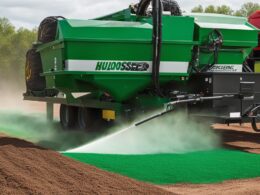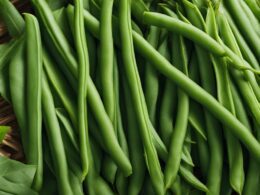Welcome to our informative guide on the differences between peat moss and sphagnum moss as growing materials. Many gardeners often confuse these two terms, so it’s important to understand their distinctions when choosing the right option for your gardening needs.
Let’s dive into the unique characteristics of peat moss and sphagnum moss, and how they can impact your plants’ growth and overall garden health.
Properties of Sphagnum Moss and Sphagnum Peat Moss
Sphagnum moss and sphagnum peat moss have distinct properties that make them suitable for different gardening purposes. Let’s explore their unique characteristics:
Sphagnum Moss:
Sphagnum moss is a versatile growing material with several notable properties:
- Neutral pH: Sphagnum moss has a neutral pH level, making it ideal for a wide range of plants.
- Water-retentive: This moss can hold a significant amount of water, helping to keep plants hydrated.
- Pliable and soft: Sphagnum moss is pliable and soft, making it easy to handle and work with during gardening tasks.
- Long-fibered: It consists of long fibers, providing good aeration for plant roots.
- Pure moss: Sphagnum moss is composed entirely of moss, with no other plant materials mixed in.
Sphagnum moss is commonly used as a seed-starter, to line baskets, and for growing orchids. It is also added as an additional growing material in potting soils.
Sphagnum Peat Moss:
On the other hand, sphagnum peat moss has its own distinct properties:
- Acidic and high in tannins: Sphagnum peat moss has an acidic nature and contains tannins, which can affect soil acidity.
- Water content: It can contain up to 70% water, making it excellent for retaining moisture in the soil.
- Naturally compacted: Sphagnum peat moss is naturally compacted and sold in compressed bales.
- Mixture of organic materials: It is composed of a combination of moss, decaying plant matter, and even dead insects.
Sphagnum peat moss is commonly used in potting and garden soils due to its water retention properties and ability to change soil acidity. However, it is important to be aware of the sustainability concerns associated with harvesting peat moss.
Uses of Sphagnum Moss and Peat Moss
Sphagnum moss and peat moss have a variety of uses in gardening and other applications. While Sphagnum moss is commonly used for decorative purposes and water retention, peat moss is primarily utilized in outdoor gardening.
Sphagnum Moss Uses:
- Indoor plants: Sphagnum moss is often used as a growing medium for indoor plants due to its water-retentive properties.
- Terrariums: It is an ideal material for creating and maintaining moisture levels in terrariums.
- Fresh Wreaths: Sphagnum moss is frequently used as a backing for fresh wreaths, providing support and a natural aesthetic.
- Lining Hanging Baskets: Hanging baskets are often lined with Sphagnum moss to improve moisture retention and promote healthy plant growth.
Peat Moss Uses:
- Outdoor Gardening: Peat moss is widely used in outdoor gardening for various purposes.
- Gardening Beds: It is commonly mixed into store-bought soil blends or used as a component in DIY gardening beds to improve moisture retention.
- Container Gardening: Peat moss is frequently incorporated into potting mixtures for container gardening, helping to provide adequate water-holding capacity.
Peat moss is highly regarded for its ability to retain water, adjust soil acidity, and its affordability. However, it is important to consider the long-term sustainability issues associated with peat moss due to its slow regeneration process and impact on sensitive ecosystems. Alternative solutions should be explored to mitigate these concerns.
Conclusion
In conclusion, when it comes to choosing between peat moss and sphagnum moss, it is essential to consider their distinct differences in properties and uses. Sphagnum moss, with its neutral pH and excellent water retention capabilities, is commonly used for decorative purposes and indoor plants. On the other hand, peat moss, known for its acidic nature and high tannin content, finds its place in outdoor gardening.
However, the sustainability issues surrounding peat moss have prompted many gardeners to look for alternatives. While peat moss is widely available and affordable, its slow regeneration process and the negative impact it has on delicate ecosystems make it a less environmentally-friendly choice.
Therefore, when making a decision between peat moss and sphagnum moss, it is crucial to bear in mind the environmental impact. By opting for sphagnum moss or exploring other alternatives, you can contribute to sustainable gardening practices while still achieving optimal plant growth and health.
How Does Sphagnum Moss Compare to Spanish Moss in Terms of Impact on Tree Health?
Sphagnum moss and Spanish moss have different impacts on tree health. While sphagnum moss helps retain moisture and nutrients for tree roots, the impact of Spanish moss can be detrimental. Spanish moss can block sunlight and inhibit photosynthesis, leading to weakened tree health and potential damage.










